JQ Magazine: JQ&A with Julia Inisan, CLAIR Programme Coordinator
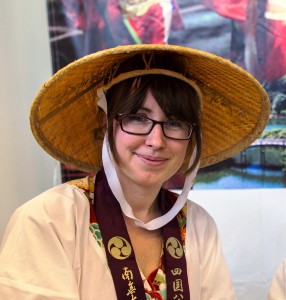
“JET Programme participants are in a very good position to match supply with demand by bringing people together, and there are many great examples of ALTs, CIRs and SEAs using crowdsourcing, social networks, recorded videos, and event planning to support their local community.” (Courtesy of Julia Inisan)
By Rashaad Jorden (Yamagata-ken, 2008-10) for JQ magazine. A former head of the JETAA Philadelphia Sub-Chapter, Rashaad is a graduate of Leeds Beckett University with a master’s degree in responsible tourism management. For more on his life abroad and enthusiasm for taiko drumming, visit his blog at www.gettingpounded.wordpress.com.
Julia Inisan (Kagawa-ken, 2013-15) first visited Takamatsu City, the capital of Kagawa Prefecture in Shikoku, in 2011 on a two-week tea ceremony study tour. That excursion served as a life-changing experience for the Frenchwoman as she fell in love with the city and decided to apply for a spot as a CIR there.
As a JET, Inisan has established herself as a valuable member of her local community, working diligently to attract tourism to the area and promote it on a global stage. But Inisan’s work in Japan has been far from limited to just Shikoku: She currently works to support the next generation of JETs as a programme coordinator for CLAIR. JQ caught up with her to discuss her history and blossoming career in Japan.
What attracted you to Japan in the first place?
As an elementary school student, I was fascinated by mythology and folklore and started reading classics like the Kojiki (Records of Ancient Matters) translated into French. I was also moved by the aesthetics expressed in works such as Murasaki Shikibu’s novel The Tale of Genji and Hayao Miyazaki’s movie Princess Mononoke, and I decided to study Japanese in high school to learn more about the archipelago’s traditional culture.
I then had the opportunity to study for one year at Higashi High School in Kitakata, where I fell in love with Fukushima Prefecture’s gorgeous landscapes, and later at Kyoto University, another life-changing experience. What kept me coming back each time was the kindness of the locals, which helped me feel at home despite the cultural differences.
What made you decide to become a CIR, and what was that like compared with your previous experience living in Japan?
I was a CIR in Takamatsu City from 2013 to 2015. I had always wanted to work for the Japanese local government and promote lesser-known areas of Japan, which is why I applied for the job. As I already had strong connections to Takamatsu, receiving my acceptance letter was one of the happiest moments of my life.
I was Takamatsu City Office’s first CIR. Without a predecessor, it was difficult for me to grasp the extent of my responsibilities at first. Fortunately, I received great advice from the CIRs working at Kagawa Prefecture and from my JET Programme sempai. Finding a good balance between work, volunteering, and private time was also challenging, but my experiences with the local community have been incredibly rewarding.
You currently work as a programme coordinator for CLAIR in Tokyo. How did that opportunity come about, and what kinds of things are you responsible for?
When my two-year contract ended in Takamatsu, my contracting organization encouraged me to apply to be a programme coordinator job at CLAIR. I felt very grateful to the JET Programme and wanted to contribute to its development while supporting Japan’s local communities at a global level. I am learning a lot from my Japanese and foreign coworkers at CLAIR, and most of all from the feedback we receive from JET participants.
I currently work on a wide variety of projects, such as planning content for Post-Arrival Orientations and the CIR Mid-Year Conference, revising publications like the CIR Handbook, and directing workshops at ALT Skill Development Conferences. Last year, I was fortunate to work in cooperation with Kagawa Prefecture to welcome back Sophie Le Berre (CIR Kagawa-ken, 1995-97), one of the 12 JET Programme alumni who returned to their former places of work as part of CLAIR’s Satogaeri Project.
I am also part of the team in charge of the JET Programme Video Contest, which started in October last year. We have received lots of awesome submissions from current and former JET participants promoting their regions from their points of view. I am greatly impressed by the quality and creativity of the videos, which you can view and vote for on the contest’s website. I hope more and more JET participants will participate in this initiative, as these videos are helping tourists discover amazing areas of Japan they’ve never heard of. If you are interested in the contest and missed the deadline for the Autumn/Winter edition, don’t worry: from April 7, 2016, you can still participate in the Spring/Summer edition.
Last December, you were featured in a national Japanese newspaper which was shared by CLAIR internationally. Can you tell us a little about that?
I was contacted by a journalist from the Nihon Keizai Shimbun who was writing an article about foreign residents in Japan involved in promoting their local community, with examples in Nara and Sado. He knew I had been designated Tourism Ambassador of Takamatsu and wanted to hear from someone from a non-English speaking country.
I am grateful for this article, which enabled me to get in touch with other people interested in revitalizing the Japanese countryside. It is also very encouraging to hear that more and more people in Japan are relying on foreigners to attract travelers from all over the world. There have been some very interesting initiatives lately, such as the Ministry of Internal Affairs and Communications’ Kokusaika-juku seminar on regional globalization and the Yamatogokoro Forum on inbound tourism, which was also cited in the article.
What did you know about Takamatsu before your JET experience?
Shikoku is probably the least famous of Japan’s four main islands, so I didn’t know much about the region, even as an exchange student living in Japan. That changed in 2011 thanks to the NPO Shikoku Muchujin, which aims at promoting the island’s culture throughout the world. I then had the chance to participate in a two-week tea ceremony study tour it organized in Takamatsu.
Before coming to Kagawa, I had heard Takamatsu was famous for contemporary art, but little did I know it had a very rich traditional culture, too. To my surprise, the city was home to great artisans, with whom I later had the honor of working during my time as a JET participant.
Over the course of those two weeks, I was able to bond with many friendly people there, so when I learnt Takamatsu was hiring a French Coordinator for International Relations, I applied to the JET Programme in a heartbeat!
When did you realize that Takamatsu could be a special place?
I was once told that Kagawa has to be particularly inventive in order to attract new visitors because it is the smallest prefecture in Japan. Its people are willing to experiment with many things, especially education. On the islands of the Seto Inland Sea, children take small group lessons with ALTs, cooking classes with CIRs, and workshops with famous artists.
What makes it possible is the citizens’ kindness and insatiable curiosity. They have built a wide variety of networks to support new initiatives while preserving the old culture. For instance, the different tea ceremony schools work together to make their art more accessible to children and foreigners. Foreigners definitely have their role to play in bringing in fresh ideas to revitalize the area. There is even an organization dedicated to the promotion of French contemporary circus that incorporates elements of regional traditions like puppet theater into its shows!
Takamatsu is one of the most creative cities I know of. Whether it is a contemporary art show, an international piano competition, or a lion dance festival, there is always something interesting going on. The city also became a very special place for my husband and me. Thanks to the local community, we got married in front of the mayor in the former residence of the feudal lords of Takamatsu.
How did you go about getting involved in working to promote Japan?
Recently in France, more and more people are becoming interested in aspects of Japanese culture even the Japanese themselves don’t know about. When I lived in Paris, I was introduced to the owner of a space dedicated to origata, an almost forgotten form of gift-wrapping. He asked me to interpret during seminars on various topics like craftsmanship, saké making, and the essence of Shinto.
One of my dreams was to share my experiences in the Japanese countryside by promoting off-the-beaten path destinations to the French public. I first got involved with Shikoku Muchujin after its president Mie Ozaki contacted me in 2011. The next year, I ran a booth with her at a Japan-themed event in Paris, and I started doing translations and contacting people for her on a volunteer basis. I have since participated in many exciting projects with the organization.
I also worked for the organizer of Japan Expo, Europe’s largest convention on Japanese culture. Although the event is famous for its emphasis on anime and video games, my role was to provide a framework for various organizations to showcase other elements of Japanese culture, such as martial arts, kimono fashion, taiko drumming, or kokeshi dolls from the Tōhoku area. Last year, I joined the festival as a CIR to promote Takamatsu with my contracting organization. Although few people knew about the city, many visitors enthusiastically spent time at our booth to learn about the Shikoku 88 Temple Pilgrimage and taste our wasanbon cane sugar treats.
A lot of Europeans are fascinated by everything Japanese, but it is not always easy for local governments to reach out to them. As a CIR, I was always happy to help Takamatsu’s citizens overcome the language barrier and cultural differences in order to promote their region. JET Programme participants are in a very good position to match supply with demand by bringing people together, and there are many great examples of ALTs, CIRs and SEAs using crowdsourcing, social networks, recorded videos and event planning to support their local community. Volunteering in my prefecture’s associations and community centers was also a good way to meet people and launch new projects.
What challenges have you encountered in working to promote rural tourism in Japan?
It used to be hard to persuade first-time visitors to Japan to deviate from the usual Tokyo-Kyoto-Hiroshima course. However, many travelers now spend a few days in Beppu (Oita Prefecture), Shirakawa-gō (Gifu), and other parts of rural Japan. They are willing to visit distant areas as long as they have access to information in their language, free Wi-Fi spots, and affordable accommodation options.
Getting them to cross the Seto Inland Sea to visit Shikoku is a real challenge, but it is well worth it as the island has so many amazing and unique attractions. The main difficulty now is branding the region as a single entity, as its inhabitants do not always share the same culture and may sometimes have competing interests. Fortunately, it is possible to find common themes running through all four prefectures, like the Shikoku Pilgrimage.
Another issue can arise from differences in travel practices. For example, French travelers may wonder why the concept of “power spots” is so appealing to Japanese people, while the latter might have a hard time understanding why their foreign friends want to visit an island only populated by cats and elderly people. For smaller towns that have not yet welcomed a lot of international tourists, these cultural differences make it difficult for the locals to identify their guests’ needs and interests.
Have you been able to enlist the assistance of other JETs in working to promote tourism to Takamatsu?
JET participants are very involved in Takamatsu’s social scene. They regularly help the city and its international associations organize exchanges with the prefecture’s residents. For example, Kagawa Prefecture CIRs have been hosting a series of hiking events to encourage foreigners to discover the Shikoku Pilgrimage trail. Many JETs also do volunteer work in their communities, blog about their experiences, and post information about the region on social media.
I wish I had been less shy during my two years in Takamatsu and had initiated more projects with Kagawa’s JET community. Luckily for me, it is not too late since I still have very good friends there. I am also in contact with former JET participants who have been living in Takamatsu for over 15 years and with others who come back whenever they can. I have the support of my JETAA France sempai too. We all share information and plans to increase Shikoku’s popularity abroad.
What have you found that foreigners like about Takamatsu?
First of all, Takamatsu conveniently offers access to both the sea and the Sanuki Mountains, which means you can walk the forest path monk Kūkai followed 1,200 years ago, relax on a gorgeous beach, and go on a sunset cruise in the same day. The natural scenery is breathtaking, especially the view on the Seto Inland Sea National Park and its countless islands.
The place is popular with contemporary art aficionados as the prefecture hosts the Setouchi Triennale International Art Festival every three years. Tourists can go island-hopping and visit old rural houses while searching for hidden art. And if you’re more interested in traditional arts, Takamatsu has everything to keep you entertained: 300-year-old bonsai trees, rural kabuki, ceramics workshops, etc.
Plus, the local food is delicious. Takamatsu is famous for its cheap and tasty udon noodles, but the honetsukidori (juicy chicken on the bone) and the olive hamachi (yellowtail) aren’t bad, either.
Have you found that the locals have been receptive to welcoming a large number of foreign visitors?
The local community’s attitude towards foreign visitors has always been fantastic! When I came back to Takamatsu as a CIR, I was greeted by a restaurant owner who told me, “You’re the French girl who came three years ago to study tea ceremony!” We had only exchanged a few words, but he still remembered me. Most people in Kagawa are eager to interact with foreigners, just like him. It makes it very easy to befriend people.
Both the city and the prefecture have international associations (Takamatsu International Association and I-PAL Kagawa) that regularly organize events. Kagawa is home to many similar organizations, including its remotest areas. There are numerous multilingual volunteers in Ritsurin Garden and on the islands, and foreigner-friendly guest houses are sprouting up everywhere, thanks to the success of the Setouchi Triennale.
The city also holds large-scale international events. In October 2014, I helped organize the Fourth Japan-France Local Government Exchange Conference, during which representatives of 17 French local governments were welcomed warmly by the locals. This year, Takamatsu will host the G7 ICT Ministers’ Meeting.
From your experiences working in tourism in Japan, how do you think the tourism as a product could be improved?
As I mentioned above, it is not uncommon for people in tourism to think that foreigners have the same expectations as their Japanese clientele. Some locations lack guest houses and campsites where travelers can meet and exchange information easily. It is also difficult to book rooms more than three months in advance, which can be a concern when you come from the other side of the world. I think it is important for the tourism industry to acknowledge these difficulties in order to realize its full potential.
From my experience, a lot of people in rural Japanese communities tend to think they cannot compete with bigger cities like Tokyo and Kyoto. They are surprised when foreigners point out their unique charms. They could benefit from consulting with their local foreign community when devising strategies to appeal to visitors from overseas. Some local governments are actively attracting international tourists by asking foreigners to design their pamphlets and promote the region from their point of view.
What are your favorite places in the prefecture?
The most unique aspect of Kagawa Prefecture is its islands, which all have their own special atmospheres. Naoshima and its unusual museums are must-see places, but my favorite is Ogijima, home of a lovely fishing village and picturesque lighthouse.
If you are an architecture lover like me and happen to be in Takamatsu, don’t miss the Shikoku Mura open-air museum and its traditional buildings that originated from elsewhere in Shikoku. I also enjoy taking early morning strolls in Tamamo Park and Ritsurin Garden. The latter—one of the most beautiful gardens in Japan—well deserves its three stars in the Michelin Green Guide.
From Takamatsu, you can go spend a day in Kotohira. There are plenty of things to do in this small town: making udon noodles, exploring the oldest kabuki theater in Japan, climbing the 1,368 steps to the inner Kompira shrine, admiring Maruyama Okyo’s splendid paintings at the Omote-shoin, etc.…
Finally, I would recommend a visit to Shodoshima Island’s Kankakei Gorge in the fall, Kannonji City’s onsen in the winter, Marugame Castle in the spring, and a trip to Mitoyo’s beaches to see the sea fireflies in the summer!
Why should people who have never visited Takamatsu explore the prefecture?
Takamatsu is the perfect place to discover facets of Japanese culture you don’t see in the big cities. It has everything: nature, culture, sports, gastronomy, spirituality…and the best people, too! There is a special culture of hospitality in Shikoku called o-settai, a tradition of offering a free place to rest, foods or gifts to the pilgrims walking the path of the 88 temples. The people of Takamatsu are incredibly warm and generous. I have been invited to many homes, and I consider people to be family. Go experience their spirit of hospitality in one of the most beautiful places of the world!
Living in Tokyo now, what things do you miss most about living in a rural area of Japan? What things have you seen that others experience the most pleasure in when they’re introduced to life in a smaller town?
There are so many things I miss from Japan’s countryside now that I live in a big city. First, the cost of living is much higher in Tokyo, and I wish I could afford eating locally grown products every day like I did back in Takamatsu. I also miss cycling to work and walking by the sea. I miss the islands’ tranquil pace of life and being able to sit on the train. I miss the plants, the animals, and the outdoor activities. Most of all, I miss the people.
I think what my foreign friends and acquaintances appreciate most about living in a rural area of Japan is that they can never be replaced in the hearts of the local people. Even if they leave, the community will still be talking fondly about them after 20 years. They are loved for who they are and have a role only they can play.
My host families from Fukushima still remember all the information I’ve shared with them. They send me Kitakata ramen noodles and vegetables so I don’t starve in Tokyo, and text me after each earthquake. People in Takamatsu are like this, too. I know I will return there someday, and that they will welcome me warmly as if I had never left.
Do you plan to stay in Japan long term? Why or why not?
I plan on staying as long as possible! Interacting with local governments and people from all over the country is tremendously exciting, and I hope there will always be a part for me to play in Japan’s internationalization. My dream is to return to Takamatsu after my work at CLAIR is over to support the local community with promoting tourism.
Visit Takamatsu City’s homepage at www.city.takamatsu.kagawa.jp/english. For more JQ magazine interviews, click here.

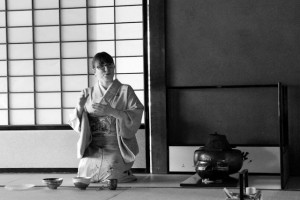
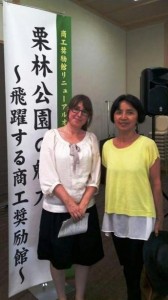
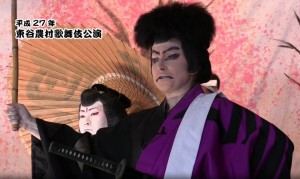
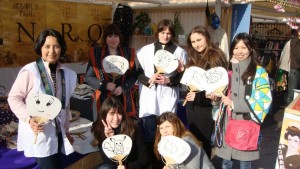


Comments are closed.